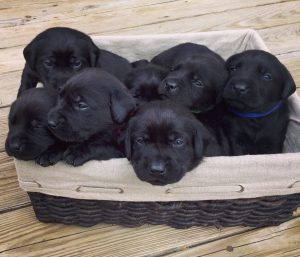Socializing your dog is essential for their overall well-being and happiness. Proper socialization helps prevent behavioral problems and ensures your dog can interact safely and comfortably with other dogs. Here’s a detailed guide to help you socialize your dog effectively.



Understanding the Importance of Socialization
Socialization is the process of exposing your dog to various experiences, including interactions with other dogs, people, environments, and stimuli. Proper socialization offers several benefits:
- Behavioral Balance: Reduces the likelihood of fear, aggression, and anxiety.
- Confidence Building: Helps your dog become more confident and adaptable in different situations.
- Improved Interactions: Ensures your dog can enjoy positive interactions with other dogs and people.
When to Start Socializing
The best time to start socializing your dog is during the critical socialization period, which is between 3 and 14 weeks of age. However, dogs of any age can be socialized with patience and consistency.
H1: Preparing for Socialization
Assess Your Dog’s Temperament
- Observe Behavior: Take note of your dog’s reactions to new experiences, environments, and other dogs.
- Consult a Professional: If your dog displays extreme fear or aggression, consider consulting a professional trainer or behaviorist for guidance.
Gather Necessary Supplies
- Leash and Collar: Use a sturdy leash and collar or harness for better control during socialization sessions.
- Treats and Toys: Bring high-value treats and favorite toys to reward positive behavior and create positive associations.
- Calm Environment: Start socialization in a calm and controlled environment before gradually introducing more stimulating settings.
H1: Step-by-Step Guide to Socializing Your Dog
Step 1: Basic Training
- Obedience Commands: Teach basic obedience commands such as sit, stay, and come to ensure you can control your dog during interactions.
- Positive Reinforcement: Use positive reinforcement techniques to reward desired behavior and build a strong foundation for socialization.
Step 2: Controlled Introductions
- Neutral Territory: Introduce your dog to other dogs in a neutral, low-distraction environment to minimize territorial behavior.
- On-Leash Introductions: Start with on-leash introductions to maintain control and gradually allow more freedom as your dog becomes comfortable.
H2: Gradual Exposure
Supervised Playdates
- Select Playmates: Choose well-socialized, friendly dogs as playmates for your dog’s initial interactions.
- Short Sessions: Keep initial play sessions short and positive, gradually increasing the duration as your dog becomes more comfortable.
Group Training Classes
- Enroll in Classes: Enroll your dog in group training classes to expose them to other dogs in a structured and controlled setting.
- Positive Environment: Ensure the training environment is positive and supportive, with a focus on building confidence and social skills.
H2: Reading Canine Body Language
Recognizing Positive Signals
- Relaxed Body Posture: Look for a relaxed body posture, wagging tail, and playful behavior as signs of positive interactions.
- Play Bows: Play bows, where the dog lowers its front legs while keeping its rear end up, indicate a desire to play.
Identifying Negative Signals
- Tension and Stiffness: Watch for signs of tension, stiffness, raised hackles, and growling as indicators of discomfort or aggression.
- Avoidance Behavior: If your dog tries to avoid the other dog by turning away or hiding, it’s a sign they may be uncomfortable.
H2: Addressing Challenges
Fear and Anxiety
- Gradual Exposure: Gradually expose your dog to other dogs and new experiences at a pace they’re comfortable with.
- Create Safe Spaces: Provide a safe space for your dog to retreat to if they become overwhelmed during interactions.
Aggression
- Professional Guidance: If your dog displays aggressive behavior, seek guidance from a professional trainer or behaviorist to develop a tailored training plan.
- Controlled Settings: Use controlled settings and gradual exposure to address aggressive tendencies safely.
H2: Advanced Socialization Tips
Consistent Routine
- Regular Interactions: Ensure your dog has regular opportunities to interact with other dogs to maintain social skills.
- Varied Experiences: Expose your dog to different environments, people, and stimuli to build confidence and adaptability.
Positive Reinforcement
- Reward Good Behavior: Consistently reward your dog for positive interactions and appropriate behavior with treats, praise, and affection.
- Avoid Punishment: Avoid punishment-based methods, as they can increase fear and anxiety and worsen behavioral issues.
Conclusion
Socializing your dog with other dogs is crucial for their mental and emotional well-being. By following this comprehensive guide and using positive reinforcement techniques, you can help your dog develop healthy social skills and enjoy positive interactions with other dogs.
FAQs
- How long does it take to socialize a dog?
- The time required to socialize a dog varies depending on factors such as age, temperament, and previous experiences. Consistent and positive exposure over several weeks to months is typically needed for effective socialization.
- What if my dog is fearful of other dogs?
- Gradual exposure to other dogs in a controlled environment, along with positive reinforcement, can help reduce fear. If your dog’s fear is severe, consider seeking guidance from a professional trainer or behaviorist.
- Can I socialize an older dog?
- Yes, older dogs can be socialized, although they may require more time and patience. Positive reinforcement and gradual exposure are key to successfully socializing older dogs.
- What if my dog shows aggression towards other dogs?
- If your dog shows aggression, it’s important to seek guidance from a professional trainer or behaviorist. They can help develop a tailored plan to address the aggression safely and effectively.
- How do I know if the socialization is working?
- Positive signs of successful socialization include relaxed body language, playful behavior, and calm interactions with other dogs. Consistent progress and positive experiences indicate that socialization efforts are effective.